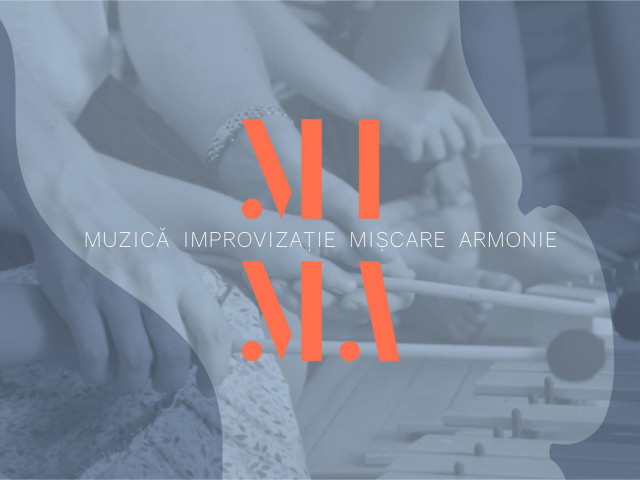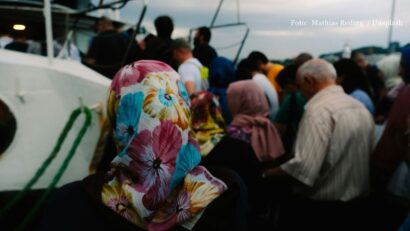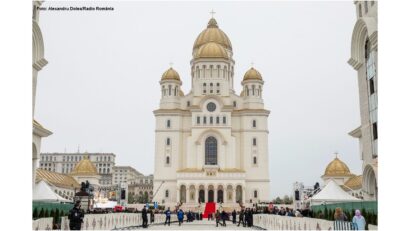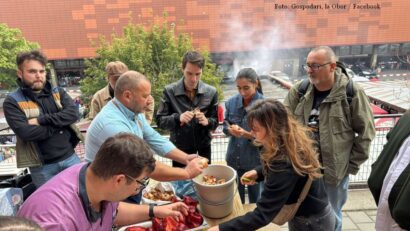Unconventional music education methods
Unconventional music education methods gained popularity in Romania after 1990

Christine Leșcu, 21.02.2018, 13:12
Unconventional education methods for both children and adults often involve music and movement and are used for passing on knowledge, to foster individual creativity and even in therapy, in some cases. Such methods started gaining popularity in Romania after 1990. At the time, German musician Hannes Heyne introduced his own teaching method in Romania. It was grounded on a basic principle: music is as important as language, since it is an ancient means of communication. Moreover, the way music was taught in the past can today serve as a model to familiarize children with music and sometimes to make adults understand each other, Hannes Heyne believed.
Hannes Heyne: “The old tribes, they started with sounds, making and finding instruments in nature. So they didn’t make instruments, so they find stones, shells, wood sticks, and tried to communicate with them. And in my experience this possibility that we have as humans is available also now. We don’t have to be busy only with electronic tools. We can also go to nature and make instruments, simple instruments, wood sticks, but also from shells. Everybody has the possibility to make music without skills”.
This method helps develop communication skills and emotional intelligence, in both children and adults. The latter can thus vent away their frustrations and stress, and sometimes learn how to better communicate with their peers.
Hannes Heyne: “To listen to each other is very important. So when I can listen to others when they speak, I give value to the other. And this we can learn by music-making as well. So we can listen to how someone is playing but we can also answer something. This is communication basic”.
Hannes Heyne traveled the world over applying his music education method in many places in Europe, the US, Mexico and Japan. He comes to Romania quite frequently, to organize workshops for children as well as music therapy courses.
Hannes Heyne: “I was invited by schools, I was invited by institutions. For me, children is not difficult work. And we start with, when children are small, with a story, a fairytale, musical fairytale. Small kids, they want fairytales, and every instrument is personage. When they are bigger they are more asking how it’s made, who made it, what is this, how it’s functioning. The adults, they want to know how I can educate others, what this is making to my health, which affects us doing this. It’s kind of music therapy or not. In Romania, I’m open for co-work, so I was here doing workshops in the Ateliere de Creativitate in the Romanian Peasant Museum and in other cities also. I was in Arad, working in Brasov, working in nearly all Romania.”
The method used by Hannes Heyne is similar to the so-called active methods for initiating kids into music that were conceived of at the start of the 20th century by composers Émile Jaques-Dalcroze and Carl Orff. In Romania this type of music education also started being used in public schools after it was initially used during courses held by NGOs.
One of them is MiMaMuzica and the active method they adopted will be next explained by Lucian Nicolae: “Before learning the letters of the alphabet, before learning how to use them in words and then write them, children first need to speak a certain language, to understand a certain language. Children learn to speak their mother tongue before learning to write and read. In music the same principle is valid. First we learn to ‘speak’ the music, that is to practice or to make it, then we decode it and learn what it is at cognitive level, how we read and write a score. I personally feel closer to Carl Orff because his method combines vocal recitation, language, movement, dance, vocal and body expression, namely drama, as well as singing and playing instruments.”
This active method lies at the core of the courses offered by MiMaMuzica and taught by Lucian Nicolae among others: “The workshops run by MiMaMuzica target children aged between zero and eight years. The teaching staff at MiMaMuzica also worked jointly with primary and secondary schools in Bucharest, as well as with a couple of nursery schools. Yet our collaboration with the schools entails our traveling with all our instruments to those schools. That is why it is more practical to invite the schools over to our premises.”
Accordingly, that special kind of teaching can be integrated in the public education system, provided certain requirements are met. Lucian Nicolae is back at the microphone: ”I am positive that it can be integrated in the official system. For instance, in France there are movement ability halls that host music and dance classes, motion and even gymnastics classes. In Romania, the school curriculum has been adapted, theoretically, to cater for such needs. Therefore, from the zero to the 4th grade the curriculum includes music and movement classes. Based on an example from France, where many schools have a minimum number of instruments and halls for movement classes, I wholeheartedly recommend this kind of education. The school curriculum is extremely generous and thus provides openness, it has been elaborated by people who are familiar with the active methods. But it takes time to put theory into practice and that depends a lot on the musical experience of the teacher.”






























